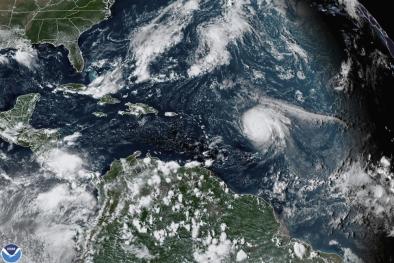Science Source
Anthropogenic Warming of the Oceans: Observations and Model Results
- Observations show the oceans have warmed over the past 40 yr, with appreciable regional variation and more warming at the surface than at depth
- Compares the observations with results from two coupled ocean–atmosphere climate models that include anthropogenic forcing
- The comparison shows remarkable agreement between the observed and model-estimated warming
- Models were sampled at the same locations as gridded yearly observed data
- Finds that in the top 100 m of the water column the warming is well separated from natural variability, including both variability arising from internal instabilities of the coupled ocean–atmosphere climate system and that arising from volcanism and solar fluctuations
- Finds that between 125 and 200 m the agreement is not significant, but then increases again below this level, and remains significant down to 600 m
- Finds that the warming is driven by an increase in net surface heat flux that reaches 0.7 W m−2 by the 1990s; the downward longwave flux increases by 3.7 W m−2, which is not fully compensated by an increase in the upward longwave flux of 2.2 W m−2
- Finds that latent and net solar heat fluxes each decrease by about 0.6 W m−2
- Finds that changes in advection can also play an important role in local ocean warming due to anthropogenic forcing, depending on the location
- Concludes that the observed sampling of ocean temperature is highly variable in space and time, but sufficient to detect the anthropogenic warming signal in all basins, at least in the surface layers, by the 1980s
Related Content
Science Source
| Science of The Total Environment
A quantitative analysis of marine heatwaves in response to rising sea surface temperature
Headline

Mar 22, 2023 | Washington Post
Earth’s oceans are showing early and surprising record warming
Headline

May 25, 2022 | Climate Nexus Hot News
NOAA Forecast Busier Than Average Atlantic Hurricane Season For 7th Year In A Row
Science Source
| Advances in Atmospheric Sciences
Another Record: Ocean Warming Continues through 2021 despite La Niña Conditions
Lijing Cheng, John Abraham, Kevin E. Trenberth et al


